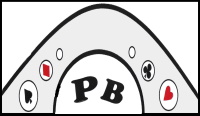Slam bidding is definitely a skill worth learning. You get a huge bonus to your score if you bid and make a slam. You should be cautious though, if everyone else makes game and you go 1 off in a slam you will get a bottom for the board.
When to think about a slam
Ideally you want 33 points between you and partner in order to bid a slam. If you have 33 then opposition can have a maximum of 7 points. This means that they cannot have 2 aces. Hopefully they will not be able to win more than 1 trick at the start of the hand, giving you time to plan.
If you can count more than 31 points between you and partner then you should probably investigate a slam using one of the methods below.
The point at which you know you have slam interest will vary depending on the auction. It may be as soon as partner opens, or much later in the auction.
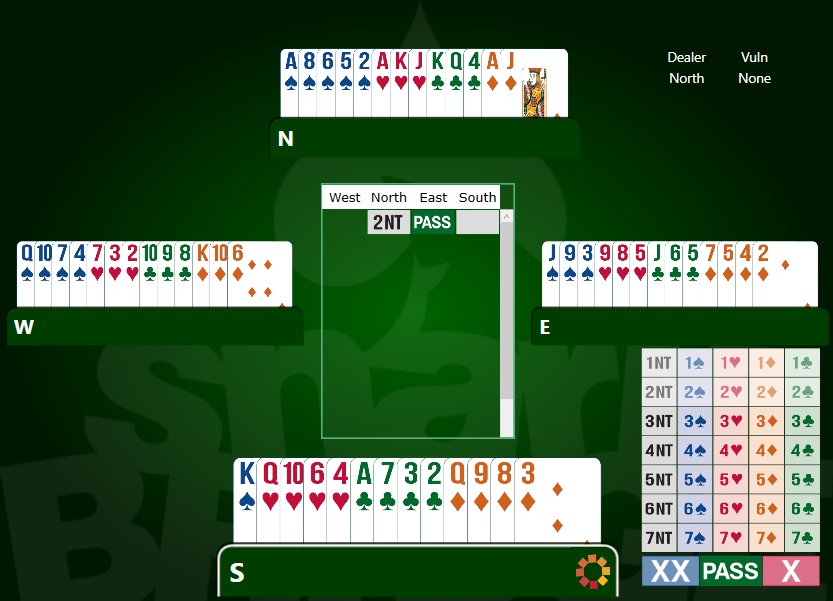
On this hand, as soon as North opens 2NT South knows that they have a minimum 31 points.
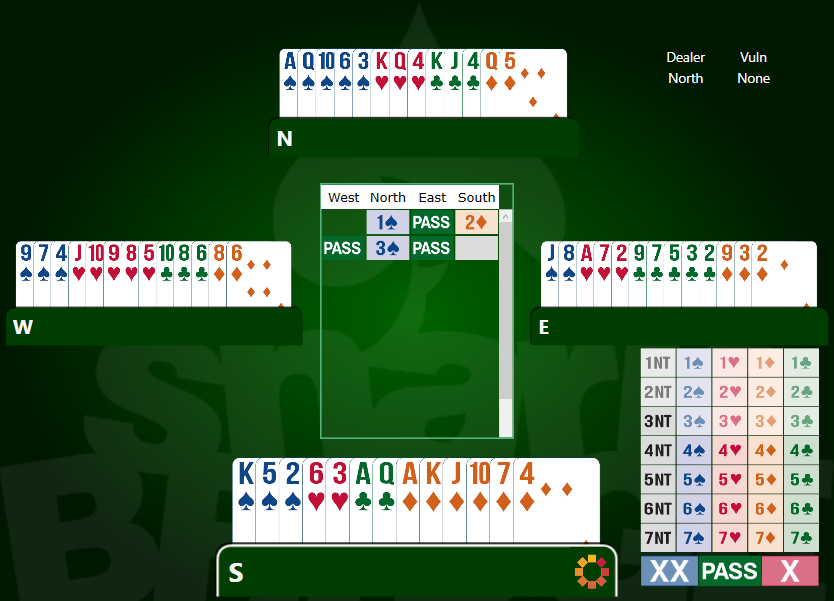
This time it is not until North rebids above their barrier that South knows a slam might be on.
Bidding with 33+ combined points.
If you know that you and partner have 33+ points then you should bid a slam. Take your time and try and find a major fit, but don’t allow the bidding to stop.
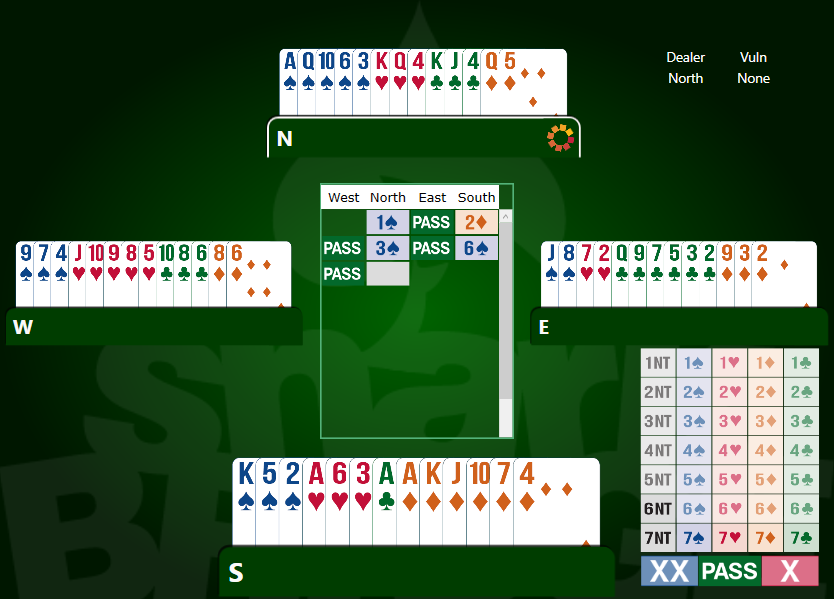
When North rebids 3♠ South knows that they have a spade fit and a minimum 35 points. No need to wait any longer. South should bid straight to 6♠.
Bidding with 31/32 points
If you know that you and partner have a minimum of 31 or 32 then you know that you are getting close to bidding a slam.
In these situations you want to make sure that you are not going to lose more than 1 trick at the start of play (i.e. that opponents don’t have more than 1 ace).
In order to make sure of this your usual move will be to use 4NT Blackwood.
Blackwood
Blackwood is used to ask your partner how many aces they have in their hand. You should only use it if you are sure that you and partner have a minimum 31/32 points and have either found a suit fit or decided on no trumps. You don’t have to have actually agreed a suit with partner. If you know you have a fit then you can use blackwood as you will be bidding the final contract.
We use blackwood by bidding 4NT. This is an artificial bid and asks for aces.
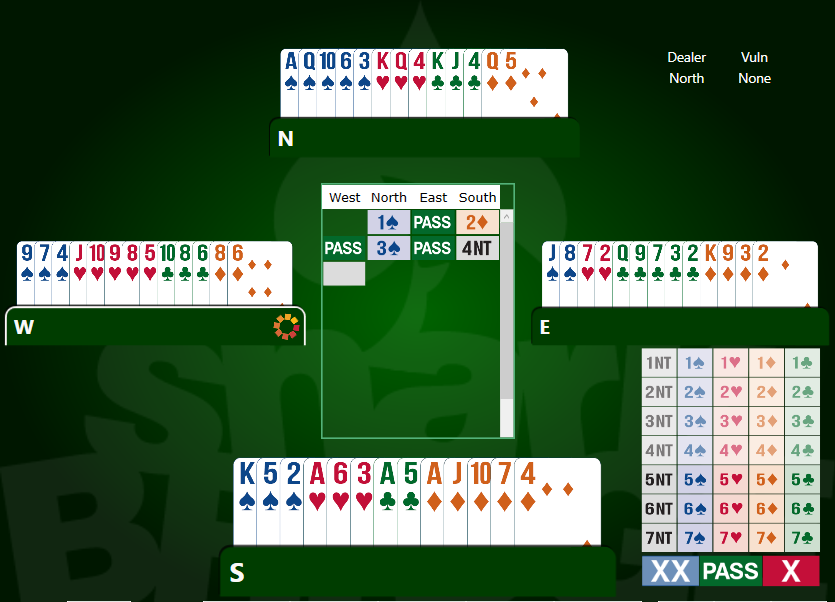
When North rebids 3♠ South knows that they have a spade fit and a minimum 32 points. They can now bid 4NT. Depending on what partner responds they can choose either 5 or 6♠ as the final contract.
Responding to Blackwood
If partner bids blackwood you must show how many aces you have
- 5♣ shows 0 or 4 aces (partner will be able to tell by their hand which it is)
- 5♦ shows 1 ace
- 5♥ shows 2 aces
- 5♠ shows 3 aces
Once you have made this response your job in the auction is over. Partner will choose the final contract.
To Slam or Not to Slam?
You have bid blackwood and partner has responded. Should you now go to a slam?
If you are missing 0 or 1 aces then raise to a slam.
If you are missing 2 aces then sign off at the 5 level.
Quantitative 4NT
There are some situations in which bidding 4NT is NOT blackwood.
If partner opens no trumps and you have not agreed a major suit then 4NT is QUANTITATIVE. It asks partner to go to 6NT if they are maximum and pass if they are minimum.
The points needed for this depend on whether partner has opened 1NT or 2NT.
If partner opens 1NT then they have 12-14 points. You then need 19 or 20 points to be interested in a slam but not sure of one.
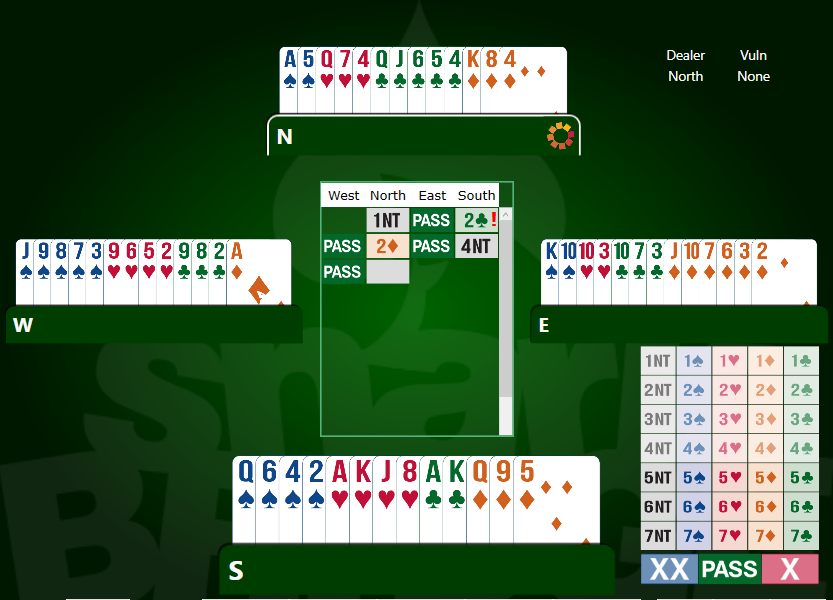
Here North has opened 1NT. South attempts to find a major fit using stayman but fails. Bidding 4NT here is quantitative. If partner has their maximum 14 then you have enough for a slam.
If partner opens 2NT they are showing 20-22 points so you need 9 or 10 to use a quantitative 4NT.
Choosing the final contract
In these auctions the final contract will be decided by the hand which opened no trumps. If they are maximum for their range they will raise to 6NT, otherwise they will pass.
Note again that that their range depends on the opening bid. If you open 1NT then minimum is 12/13 and maximum is 13/14. If you open 2NT then minimum is 20/21 and maximum is 21/22.
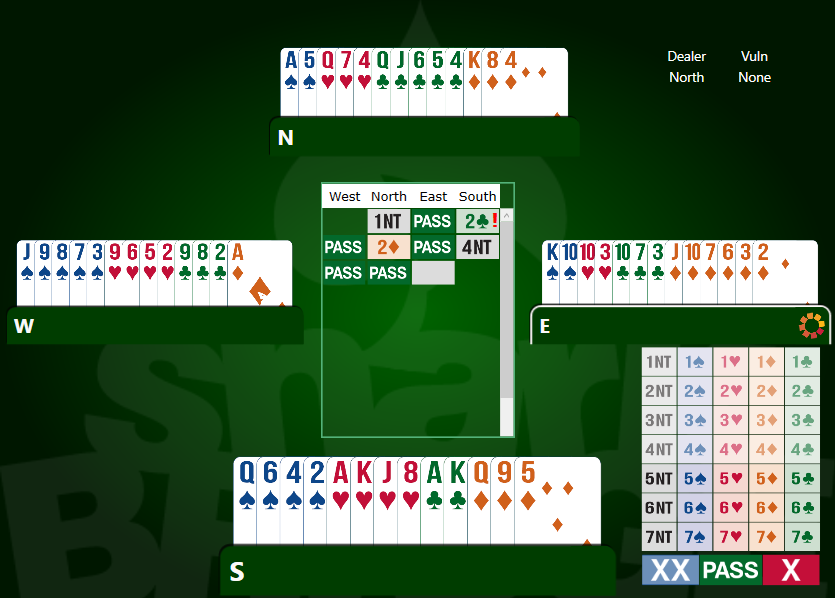
North has a minimum 12 count for their 1NT opener. They should therefore pass and play in 4NT.
